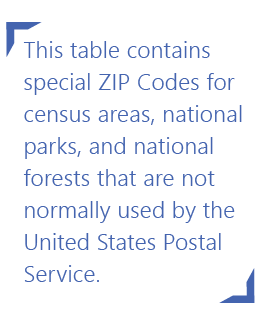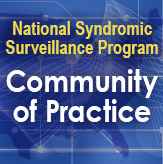Technical Updates
Updated June 16, 2023

Patching Schedule
- June 20: NSSP vendor patches (Testing and Development) 12:00–8:00 AM ET
- June 22: NSSP vendor patches (Onboarding and Production) 12:00–8:00 AM ET
- July 18: NSSP vendor patches (Testing and Development) 12:00–8:00 AM ET
- July 20: NSSP vendor patches (Onboarding and Production) 12:00–8:00 AM ET
New SQL Resource Table: ZipCode_to_CountyRegion_Mapping

By popular demand, a new resource has been added to the BioSense_Platform DATAMART: A view of the ESSENCE ZipCode_to_CountyRegion_Mapping table. This table is used to map the patient ZIP Code received in messages to the ESSENCE Region associated with it.
Although no actions are required by site administrators, this resource will allow SAS and R users visibility into the actual mappings so that they can more easily troubleshoot mapping issues and request mapping changes.
You may notice outdated ZIP Codes or other codes no longer associated with your site in the mapping table. NSSP ESSENCE does not restrict mapping to the most recent U.S. Postal Service (USPS) list of ZIP Codes. Although the USPS periodically updates ZIP Codes, using their list would create an issue for ESSENCE. If we remove any ZIP Codes from our mapping list, it will cause historical patient visits that used old ZIP Codes to become orphaned and unqueryable. Additionally, note that this table contains special ZIP Codes for census areas, national parks, and national forests that are not normally used by the USPS.
The ZipCode_to_CountyRegion_Mapping table is in the BioSense_Platform database on the DATAMART server. This SQL query can be used in the SQL wrappers for R and SAS to view the complete table:
FROM ZipCode_to_CountyRegion_Mapping
DC Health’s FASTER Dashboard Added to NSSP Website
We’re pleased to announce a new addition to our Using Dashboards to Present NSSP Data web page.
The District of Columbia Department of Health’s Center for Policy Planning and Evaluation now conducts surveillance of firearm injury visits to city emergency departments. The “Firearm Injury Surveillance Through Emergency Rooms” (FASTER) dashboard pulls data from discharge diagnosis codes. Dashboard data are updated monthly and represent the number of emergency department visits for firearm injury—including assaults and accidental or self-harm shootings. DC Health uses FASTER to monitor the victimization of at-risk groups and to understand trends in firearm injury. Dashboard demographics include ZIP Code, ward, age, and ethnicity. Firearm injury data show those affecting District versus non-District residents, monthly trends, and incident heatmaps for day of the week and time of day. The dashboard is a tool for healthcare coordinators, academic researchers, policy makers, gun violence experts, and the public.
FASTER is funded by CDC grant CDC-RFA-CE20-2005.
‘By the Numbers’ Stats Highlight Sustained Growth
A description of the National Syndromic Surveillance Program (NSSP) can be found on our website, fact sheet, and infographic. We’ve recently updated “By the Numbers” and look forward to further expansion of facilities across NSSP in 2023:

More than 6,400 health care facilities covering 50 states, the District of Columbia, and Guam contribute data to NSSP daily.

76% of U.S. emergency departments send data to NSSP, often within 24 hours.

Within 24 hours of a patient’s visit, data are available to NSSP for analysis.

More than 7.4 million electronic health messages are received by NSSP every day.
Laboratory Data

Check out the updated FAQs for lab data in the NSSP Technical Frequently Asked Questions. We explain NSSP’s agreement with a national lab to obtain all test results for selected conditions, data flow and frequency of updates, health conditions covered, specimen identifiers, and more.
If you haven’t explored NSSP’s lab data yet, we receive all result types for the selected conditions from one national commercial laboratory. This means the laboratory data contain both positive and negative results, enabling volume or percent calculations. We also receive patient demographics (sex, state and ZIP Code, age in years or months, and race and ethnicity) and information about the provider (state and ZIP Code, provider type—like OBGYN or Pediatrics) and laboratory facility (state).
In addition to some of the traditional surveillance techniques, many analysts find using these data inside ESSENCE especially useful for overlay comparisons. For example, if emergency department data show an increase in a condition like pneumonia, the laboratory testing data can help explain what might be circulating in a geographic area. Similarly, if the laboratory testing data show an increase in group A strep, the emergency department data can help determine if illness was severe enough that patients sought emergency care for the condition.
As shown below, CDC NSSP receives updated lab information at two points in the laboratory data flow:
Lab Data Flow

To access lab data, you’ll need permission from your site administrator (contact nssp@cdc.gov). Others, including CDC staff and other federal agency staff, may also access lab data if they are actively collaborating with an NSSP–ESSENCE participant or CDC user. Documentation of the collaboration is required. For approval guidelines, please email nssp@cdc.gov.
We appreciate your questions. The NSSP FAQ web page covers topics including Data Quality Dashboard and Reporting, Drive Space Allocation, Laboratory Data, Master Facility Table, Mortality Data, and Onboarding. Check it out!
Mortality Data
Onboarding of mortality data can be fast. To add the mortality data source for your site, please contact nssp@cdc.gov. Commonly asked questions about mortality data are posted on the NSSP website. An NSSP article describes the routing of mortality data. There’s also a slack channel: #Mortality-data.
Onboarding
The onboarding team is currently working with several California sites to onboard the city of Long Beach and the following counties: Orange, San Diego, Santa Barbara, and San Joaquin.
If you’re interested in learning more about onboarding and related topics, please email the NSSP mailbox (nssp@cdc.gov) or create an NSSP Service Desk ticket.
Publication Updates
- A newly released MMWR, “Emergency Department Visits Involving Mental Health Conditions, Suicide-Related Behaviors, and Drug Overdoses Among Adolescents—United States, January 2019–February 2023,” adds to the national picture of adolescents’ well-being. ED visits related to mental health conditions, suicide behaviors, and drug overdose decreased as of late 2022; but concerns remain, particularly for teenage girls.
- The Data Quality (DQ) Dashboard User Manual, Version 2, is scheduled for release soon. This manual supports the revamped DQ Dashboard application. The dashboard’s user interface will use grid cards to display graphical and tabular information and assist site administrators in evaluating data flow, completeness, validity, and timeliness of submitted data.
- New factsheets and technical briefs published to the Knowledge Repository:
- CDC All Drug v2 – This definition was developed to assist state, local, tribal, territorial, and federal public health practitioners in monitoring emergency department visits for suspected overdoses of any drug.
- CDC Stimulants v3 – This definition was developed to assist state, local, tribal, territorial, and federal public health practitioners in monitoring emergency department visits for suspected stimulant overdoses.
- CDC Suicide Attempt v2 – This definition was developed to assist state, local, tribal, territorial, and federal public health practitioners in identifying emergency department (ED) visits for suspected suicide attempts. The definition can be used to supplement case-finding using syndromic surveillance data, monitor trends, and detect outbreaks of suspected suicide attempts.
